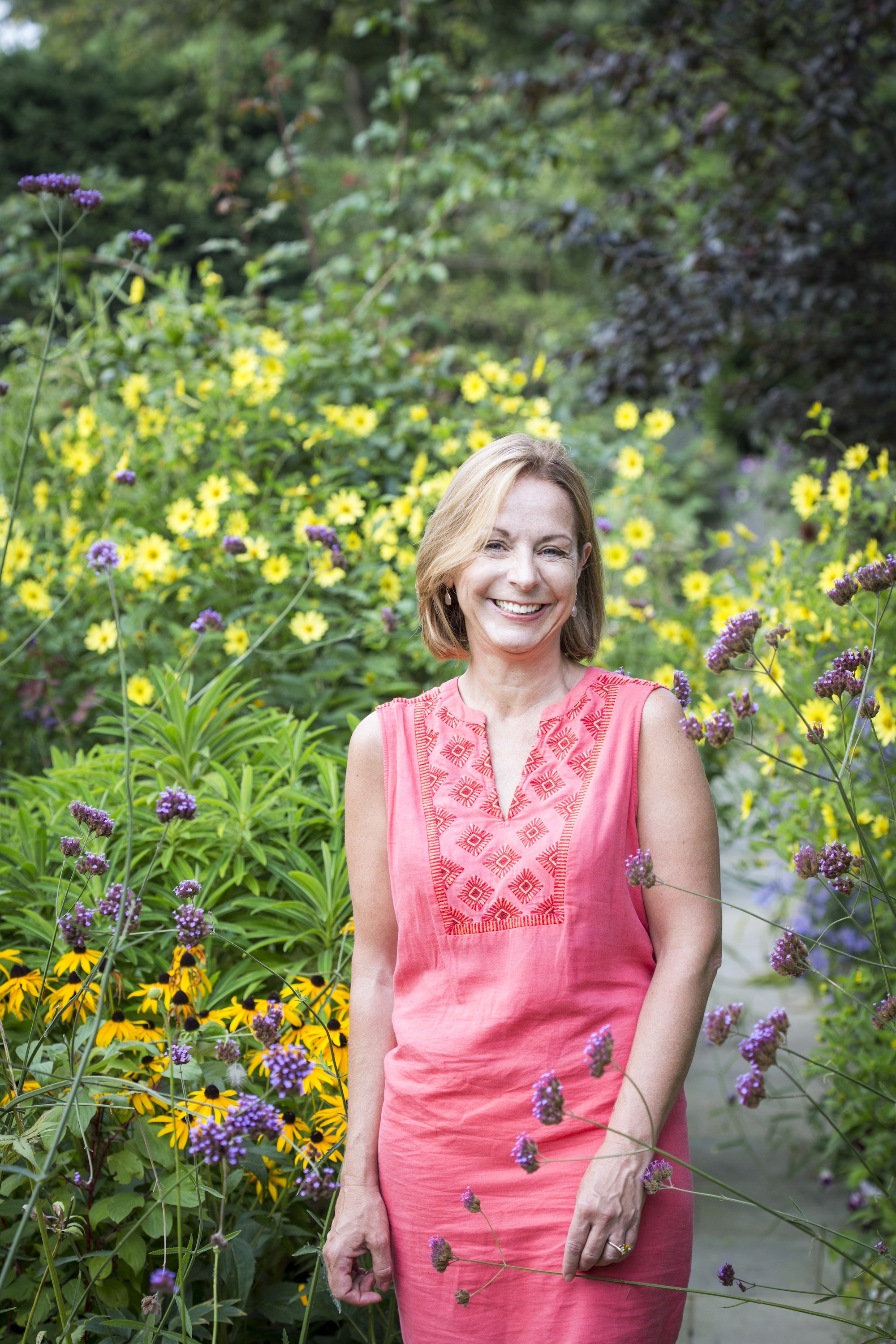
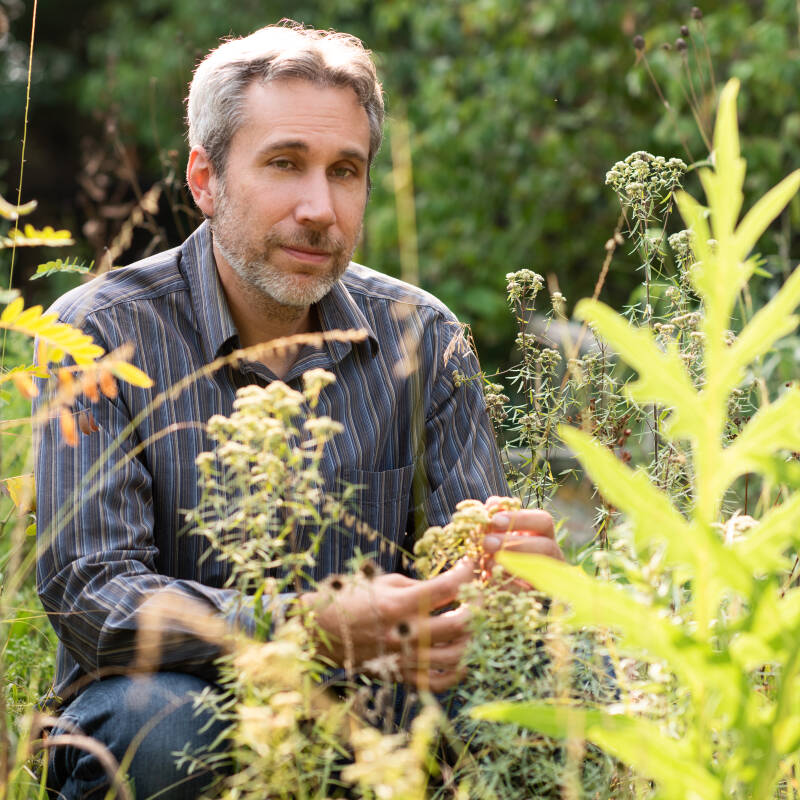

British garden designer Jo Thompson swears that this year will be her last RHS Chelsea Flower Show. “I keep saying this to everybody–absolutely, this is the last one,” she laughs. With nine main avenue Chelsea show gardens under her belt and medals galore (including five gold medals and the coveted People’s Choice Award at the first RHS Chatsworth Show), Thompson wouldn’t be faulted if she were to make good on her word.
Known for her beautiful and atmospheric gardens, Thompson is one of the most celebrated garden designers and plantswomen working today. Her work for private clients takes her all over the U.K. to Europe and across the ocean, from New York to Brazil. In addition to her next show garden, Thompson is currently at work on landscapes for Corpus Christi College, RHS Rosemoor, and the garden and arboretum at Saling Hall created by the wine writer Hugh Johnson. Dozens of her private commissions are on display in her recently-published book The New Romantic Garden.
Thompson’s gardens are not only significant for their beauty, but for being sustainably-minded in a serious but unfussy way: Thompson uses organic methods, local materials, and favors biodiverse, climate-adapted plants, but she isn’t a purist about native plants–and as she told us in her Quick Takes below, she believes every garden needs a rose.
In 2021, Thompson started what was arguably the first garden Substack, The Gardening Mind. Thompson has grown it to be so much more than a newsletter–with online classes, webinars, and group chats, and in-person events (some of her readers even volunteer to help install her show gardens!). Below Thompson takes us into her own gardening mind:
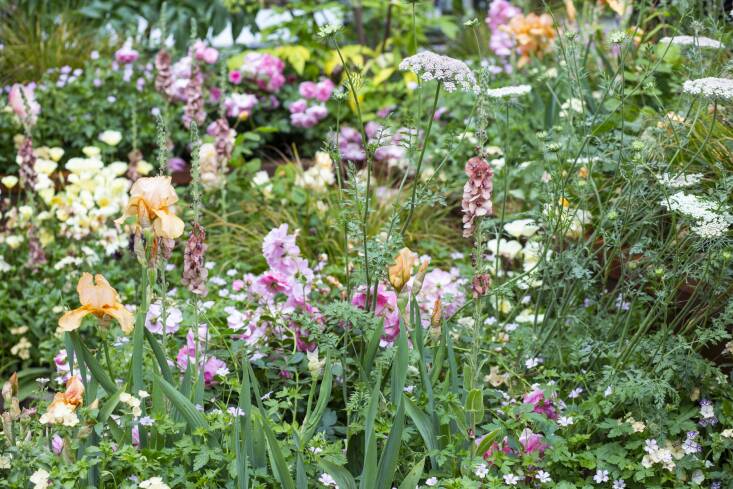
One afternoon the old lady across the road invited me and my mother into her garden. I wandered around the narrow paths through what seemed like thousands of mounds and bumps dotted with millions of tiny groups of plants. In my child’s mind, this was a fairy garden. It was a place of magic and a place that was slightly crazy yet which had every right to exist. Looking back now with experience and hindsight, after a half-century’s stepping along in the world, I understand that this never-ending fairy garden was actually a gravel garden with groups of tiny drought-loving plants cut through by curving paths, which travelled around the garden.
The Making of an English Country Garden by Deborah Kellaway. It isn’t in print any longer, but it truly is a wonderful book: simple, genuine, a good read, and inspiring at the same time. I’d urge you to try to find a copy, if you can. Deborah’s garden writing has you feeling that you’re reading a novel; it reminds me of when I first read Nigella Lawson’s How To Eat, with its seductive combination of tales and knowledge all wrapped up in one book. There are ‘before,’ ‘during,’ and ‘after’ maps (don’t you just love a book with a sketched map?), plant lists and experiments, and discussions about roses—all written in a totally engaging way. Deborah describes her plants with the tenderness and affection of a mother nurturing sometimes wayward children: always modest, ready to admit failures, but optimistic, too. It was the first gardening book I was given when I embarked upon that garden project, which turned into my whole career; so, maybe it’s even life-changing.
These days I use Substack rather than Instagram. India Knight’s ‘Home’ inspires me because of its intelligent, engaging, and sheer joy-bringing content.
Inevitable, romantic, gentle.
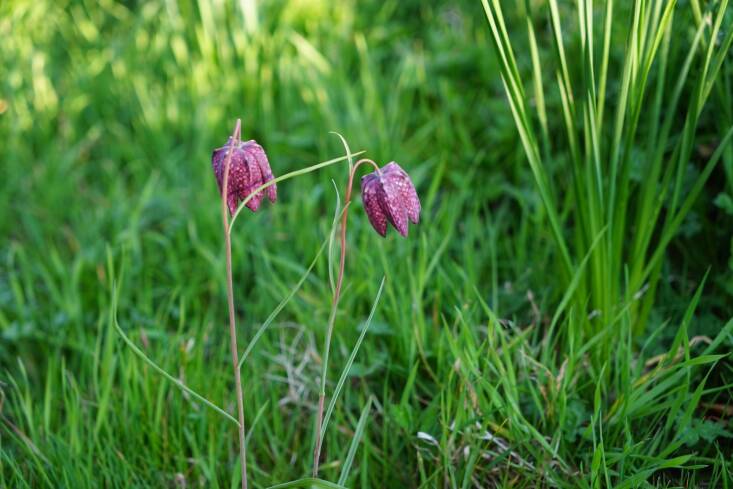
Fritillaria meleagris. The delicate elegance of this early spring bulb, with its chequerboard markings, never fails to intrigue me. I am obsessed with this little beauty, and I have to take its portrait every single day from the moment it’s in bud, through to its last hurrah. Exquisite. It’s beautiful in the patch of long grass where it’s growing in my garden, and just as beautiful in a container with ferns.
It depends which country I’m in. In the UK, it would be Phormium and bamboo. I can’t bring myself to use these plants, which feel so out of place here, but in their natural habitat, they can look extraordinary.

The rose, of course. Roses are invaluable in a mixed border; I love using them in every garden I create. Roses bring height, form, structure, and, most importantly,they bring romance and magic. The sheer beauty and presence of their blooms is so striking that their charm stays in the memory long after their blooms have faded and gone. This is why they work so well within a mixed planting—the different shapes, textures and colours of a carefully selected range of companion plants serve as a complement to the rose’s glory, creating different atmospheres and effects depending on the plants you choose.
Even if they’re in exactly the right place and even if you have given them everything they need, with the right conditions and the right soil, some plants just don’t like where you’ve planted them. And you have to accept it.
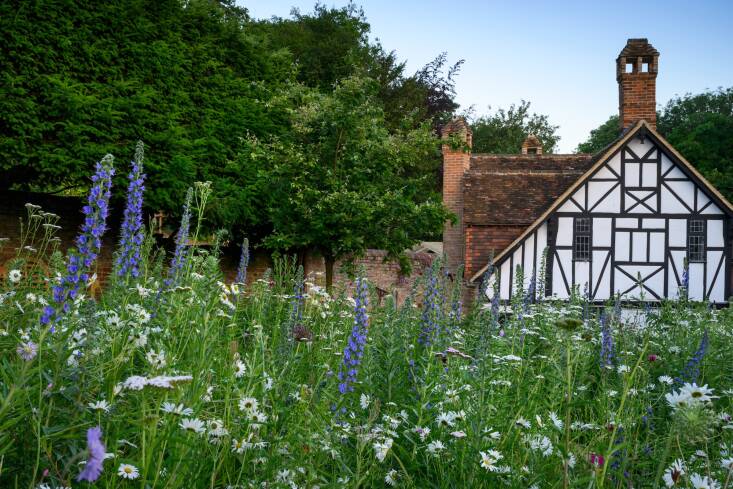
I cannot bear garden snobbery. Who’s to tell people what they should and shouldn’t like? I remember 30 years ago being told off for liking dahlias—and now look!
The same goes for flowering shrubs. I have felt very sorry for shrubs over the last quarter of a century. Sharp-elbowed out of favour by ornamental grasses amongst the garden fashionista set, shrubs have been quietly biding their time (in a Colefax & Fowler floral fabric kind of a way). Shrubs have had a really hard time of it, being deemed unexciting and predictable. Now it’s safe to say that shrubs are “back” (although they were always “back” in my book). People have remembered the necessity of structure. You need those underpinnings to make everything else work—just like a good bra makes all the difference to any outfit. I don’t want to be too harsh on ornamental grasses: I do like them and think they’re really effective in the right place, but they need space and light—and a shrub or two to bulk them up.
Again, it depends on the location. In the UK, gardens consisting of right-angled, white-rendered walls make me very sad, as they just look so out of place under our grey skies. Nor am I a big fan of planting between plank paving which basically doesn’t survive if it is part of a path. And the worst thing? Porcelain tiles, when used in the U.K. are soulless—and a deathtrap when wet.
Planting by the moon. Plant your annuals and fruits and vegetables that bear crops above ground between the day the moon is new to the day it is full—waxing. Plant perennials and root crops between the day after it is full to the day before it is new again—waning. The science behind what may seem like a myth bears up: As sap is drawn up or down trees according to light levels, so different plants benefit from gravity. Gardeners have been doing this forever, so, who am I to judge? To the horror of scientists, I am very much of the mind that if it works, it works.
When I’m creating wildflower meadows, I plant them with every kind of bulb in the autumn: Crocuses, snowdrops, iris reticulata, fritillaries, species tulips, narcissi, camassia, alliums. The bulbs give colour and interest before the main event and the pollinators adore it.
Cutting branches from spring shrubs—that unfashionable forsythia that looks garish outside looks gorgeous, if you just bring a stick of it in during February or March. I also love little bedside posies of spring flowers. I don’t profess to be a flower-arranger (my skills are with flowers outside), but primroses, grape hyacinths, and a few tiny narcissi look absolutely gorgeous when popped into a little jar. The same goes for narcissi and tulips, especially if it’s grey outside. Then from about May onwards, I find that it’s impossible for me to cut anything from the garden and bring it in. I can’t bear to change the scene!
Rose, of course!
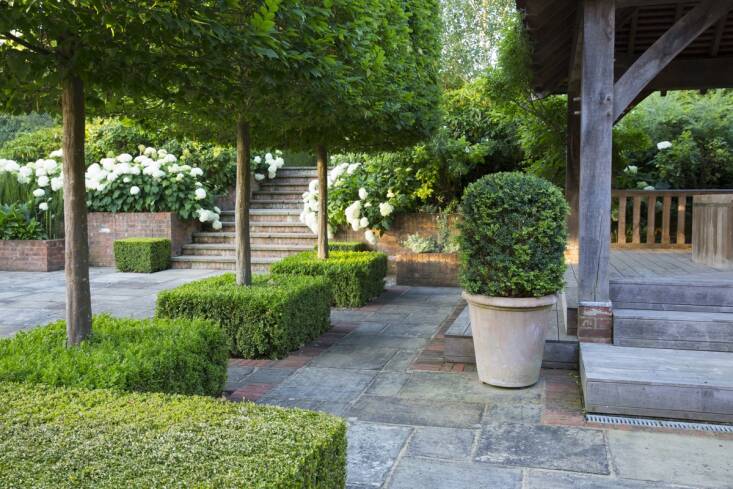
In order to make a garden that feels in its place, I like to avoid using too much hardscaping. Whatever I do use will be related to whatever is local, so it totally depends on the location of the garden.
My hori-hori knife, for weeding and planting.
I don’t have specific gardening clothes, as I’m always too eager to get outside. I’ll often be out there in my pajamas! My go-to is whatever I’m wearing when I find myself drawn outside, which can get a bit troublesome sometimes: I’ve ruined a lot of clothes that way.
Favorite nursery, plant shop, or seed company:
All the magnolias and the exquisite blossoming trees that I don’t have room for—cherries, quince, the list goes on and on. I think there should be a rule that every front garden should have a tree with beautiful spring blossoms to uplift both passers-by and pollinators.
RHS Rosemoor in Devon, where my Winter Garden is being created at the moment. And the wonderful Iford Manor in Wiltshire, the most inspirational of gardens, with the most magical of atmospheres.
For Nature and for memories. I’m constantly inspired and energised by the continuous change as we move through the seasons and the wheel of the year keeps turning. The magic of nature absorbs me as I strive to create gardens which will be backdrops for people’s memories.
Thanks so much, Jo! (You can follow her on Instagram @jothompsongarden.)
For our full archive of Quick Takes, head here.
v5.0
When you register as a free Member of the Remodelista family of websites (Remodelista, Gardenista, and The Organized Home), you gain access to all current posts plus 10 archived posts per month, our internal bookmarking tool, and the community bulletin board.
Member benefits include:
For $5/month ($59.99 paid annually) you'll enjoy unlimited, ad-free access to Remodelista, Gardenista, and The Organized Home and all the benefits of Membership.
Subscriber benefits include:
For $5/month ($59.99 paid annually) you'll enjoy unlimited, ad-free access to Remodelista, Gardenista, and The Organized Home and all the benefits of Membership.
Subscriber benefits include:
Benefits include:
For $5/month ($59.99 paid annually) you'll enjoy unlimited, ad-free access to Remodelista, Gardenista, and The Organized Home and all the benefits of Membership.
Subscriber benefits include:
When you register as a free Member of the Remodelista family of websites (Remodelista, Gardenista, and The Organized Home), you gain access to all current posts plus 10 archived posts per month, our internal bookmarking tool, and the community bulletin board.
Member benefits include:
If at any time you want to become a Subscriber and enjoy unlimited, ad-free access to all our content, just go to the My Account link and choose Subscribe.
Advertising funds our work at Gardenista and helps us provide you with a daily dose of garden inspiration & design. We hope you’ll consider disabling your adblocker for Gardenista so we can continue our mission: a well-designed garden for all.
Thank you for your support.
Have a Question or Comment About This Post?
Join the conversation